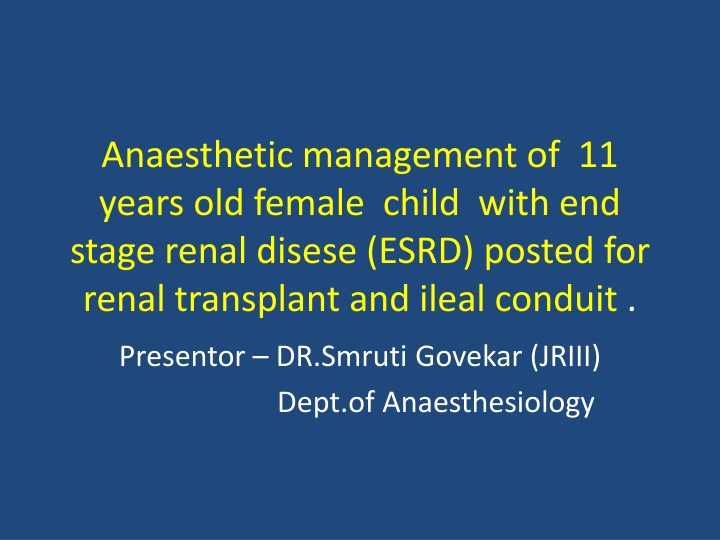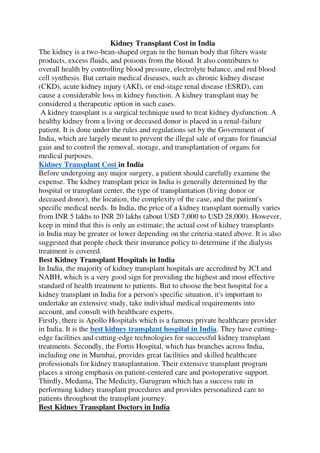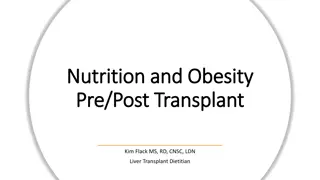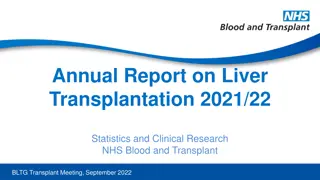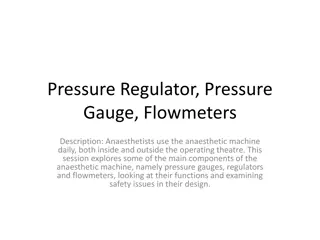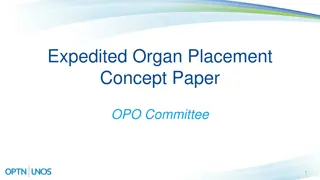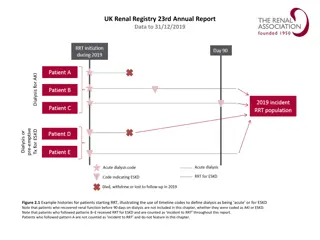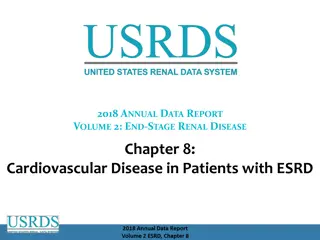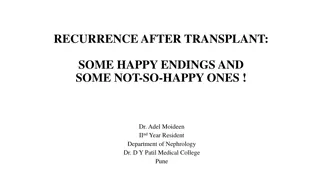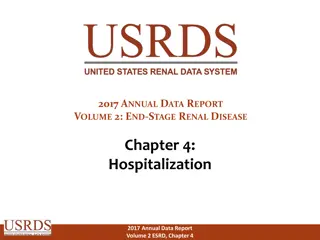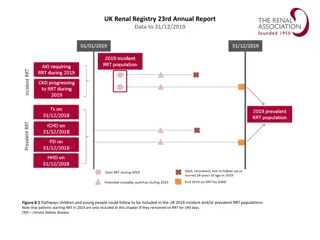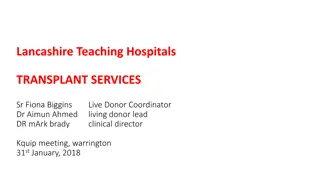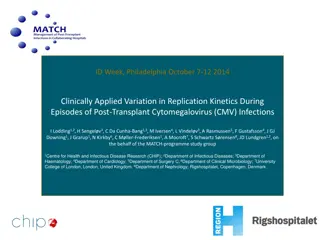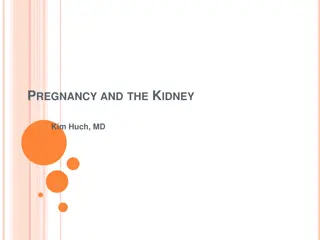Anaesthetic Management of 11-Year-Old Female with End-Stage Renal Disease (ESRD) for Renal Transplant and Ileal Conduit
An 11-year-old female child with end-stage renal disease (ESRD) and multiple surgical histories was evaluated for renal transplant and ileal conduit surgery. The patient presented with hypertension, chronic kidney disease, neurogenic bladder, and urinary incontinence. Preoperative assessments revealed normal vital signs and laboratory values. Due to a high-grade right vesicoureteric reflux, pre-transplant right nephroureterectomy was performed before the planned live-related donor renal transplant. The patient's management involved addressing the anticipated risks and ensuring proper preparation for the surgeries.
Download Presentation

Please find below an Image/Link to download the presentation.
The content on the website is provided AS IS for your information and personal use only. It may not be sold, licensed, or shared on other websites without obtaining consent from the author.If you encounter any issues during the download, it is possible that the publisher has removed the file from their server.
You are allowed to download the files provided on this website for personal or commercial use, subject to the condition that they are used lawfully. All files are the property of their respective owners.
The content on the website is provided AS IS for your information and personal use only. It may not be sold, licensed, or shared on other websites without obtaining consent from the author.
E N D
Presentation Transcript
Anaesthetic management of 11 years old female child with end stage renal disese (ESRD) posted for renal transplant and ileal conduit . Presentor DR.Smruti Govekar (JRIII) Dept.of Anaesthesiology
A 11 year old female child was referred from nephrology OPD for renal transplant surgery for pre anaesthetic evaluation. Patient was a known hypertensive since 1 year, on tablet nifedipine 10 mg BD. Had a chronic kidney disease since 1 year and on dialysis twice a week cycles. Known case of neurogenic bladder and urinary incontinence since age of 5 years . Normal birth history , vaccinated properly.
Patient underwent multiple surgeries. 1. Spine surgery was done for tethering of spinal cord with transitional conus lipoma 6 yrs ago. 2. Rt CTEV soft tissue release 4 years ago, 3. Rt nephrectomy 1 month ago 4. Permcath insertion under general anaeathesia in 4 months back 5. Patient had multiple times blood transfusion i/v/o anaemia .
General examination: Afebrile pallor ++ no icterus , clubbing , cyanosis ,lymphadenopathy , edema present. Patient was thin build Weight 18 kgs HR- 108bpm BP- 132/90 mmhg Airway examination : Mallampatti grade 1 Spine examination : normal in curvature scar mark from previous surgery present at L1-L3 level
Systemic examination : CVS S1S2 +, no murmur RS air entry was bilaterally equal. CNS- concious and oriented PER ABDOMEN- soft , no tenderness present .
Investigations Hb- 8gm% Platelet counts 2.34 lakhs TLC-3500 Serum urea-36 Serum creatinine-5.5 Electrolytes NA/K- 141/4.7 BT/CT-1 min 28 sec/4 min 45 sec Bilirubin 0.33/0.05 PT/INR 13.4/1.0 Others : 2d echo- normal study Ecg- normal CXR- normal
Case Details In view of the high grade Rt.Vesicouretric reflux and anticipated risk of post transplant recurrent UTI , pre transplant Right Nephroureterectomy was done. Patient was planned for Live related donor renal transplantation with ileal conduit after 6 weeks once she had recovered from first surgery Donor maternal grandmother
Surgery plan Live Related donor Renal transplantation with urinary diversion using ileal conduit and implantion of transplanted kidney ureter into the conduit Donor kidney be placed into the Rt. Iliac fossa with vascular anastamosis done to the iliac vessels (Rt). Patient was accepted for surgery under ASA grade 3 with high risk consent adequate blood (leucodepleted )and blood products were booked.
Anaesthetic management Pre operative optimisation : 5 days prior to surgery imunosupressant drugs were started Anti hypertensive medication tb. Nifedipine 10 mg was continued on day of surgery. Heparin free dialysis was done 1 day prior to surgery . 1 pint PCV was given during dialysis . Pre operative vitals : HR 124 bpm BP-170/100mmhg( on tb Nifidipine 10 mg ) SPO2 100% on room air Plan of anaesthesia : General anaesthesia
All routine monitors were attached ECG, NIBP, SpO ,CVP monitor,IBP were attached Premedications- inj.gylcopyrrolate 0.004mg/kg, inj.midazolam 0.02mg/kg and inj.odansetron 0.1mg /kg was given and inj.fentanyl 40 mcg i.v. Patient was pre oxygenated with 100% O2 for 3 minutes. Induced with inj.propofol 40 mg and Inj atracurium 9 mg given as a relaxant. 10% lignocaine sprayed at vocal cords pressor response . Intubated with 5.5 cuffed endotracheal tube. Maintained on oxygen, Nitrous oxide and isoflurane in range of 0.6-1%
Arterial line was inserted in right radial artery for meticulous blood pressure monitoring . Intra operative fluid management was done cvp guided with target cvp of 10-12 mmhg Intra operatively blood pressure was maintained in range of 130-140 mmhg systolic and 85-90 mmhg diastolic. There was once drop in BP to 110/80 mmhg for which 150 ml colliod was given . Rest surgery was uneventful .
Inj.Anti thymocyte globulin was started 1 hour after induction at the rate of 9ml/hour and maintained throughout the surgery . Inj . Methylprednisolone 500 mg in 100 ml Normal saline was started slowly . external warming device was use with continuous temperature monitoring probe . Patient was reversed with inj neostigmine 0.5mg/kg and inj.glycopyrolate 0.008mg/kg. Patient was extubated and shifted to kidney transplant icu.
Intraoperative total I.V. fluids 1500 ml crystalloids(NS 0.9%) and 150 ml colloids . Intraoperative blood loss-350 ml Intraoperative urine output- 220 ml (post renal vascular anastomosis ) Cold ischemia time -11 mins 30 seconds Warm ischemia time -57 mins 41 seconds Total surgical time 9 hours
Anaesthetic challenges 1. Patient was of paediatric age group with low weight for her age and also history of previous multiple surgeries 2. Patient with end stage renal disease with hypertension 3. Patient was known anaemic and raised creatinine , hyerkalemia . 4. Two major procedures to be done in same setting RENAL TRANSPLANT AND ILEAL CONDUIT . 5. Prolong nature of surgery and prolong use of mechanical ventilation with risk of hypothermia . 6. Altered fluid distribution , reduced protein binding , acidemia to affect bioavailability of drugs.
Discussion The multiple co morbidity associated and complexitity of surgical procedure make the transplant the high risk procedure . Chronic CKD in children has different aetiologies than in adults which are : Renal dysplasia with / without vesicouretric reflux Congenital nephrotic syndrome Polycystic kidney
In children hypervolemia is major cause of hypertension . It can cause pericardial effusion and cardiac dysfunction . Anti hypertensive medication should be continued in peri operavtive period for hemodynamic stability except ACE inhibitors . Pre operative investigations : Routine blood tests (CBC) Sr creatinine , blood urea level , BUN, sr electrolytes , Coagulation profile There is possibility of overhydration and hypervolemia , for child s volume status weight of child should be measured before and after hemodialysis . Cardiac evaluation : 2D ECHO impaired LV function (hypervolemia ) before they require dialysis and to know severity of cardiac impairement .
Patients with CKD exhibit reduced protein binding (due to hypoalbuminaemia) and a prolonged half-life of drugs which rely on renal metabolism or elimination. Anaesthetic drugs safe to use in renal impairement inlcude Propofo , Atracurium , Cis atracurium, isoflurane Drugs to be avoided Succinylcholine
The main anaesthetic goal is to maintain renal perfusion pressure of the donated kidney by avoiding hypovolemia, hypotension and avoiding nephrotoxic drugs. This is achieved mainly by : maintaining target CVP of >/= 10-12 mmhg Use of diuretics like inj . Mannitol 0.5-1 mg/kg or inj . Furosemide 2mg/kg . Steroids and immunosuppressive agents are administered intraoperatively to decrease the chances of graft rejection. Maintain normothermia. Cold ischemia time to be kept minimal
Pediatric renal transplantation Transplant is not usually undertaken until a weight of 10 kg has been reached due to : increased technical difficulty discrepancy between the sizes of the donor and recipient vasculature an inability for the cardiac output of such a small recipient to cope with the additional demands of a relatively large transplanted kidney. In children under 20kg , this may pose difficulties with ventilation and wound closure due to size of kidney . Smaller children who have received a large kidney relative to their size are usually extubated in the paediatric intensive care environment after a period of stabilization.
Summary Children with CKD requiring surgery or undergoing renal transplantation are considered complex and high risk. Meticulous monitoring of cardiovasular status and fluid management are corner stones of the anaesthetic management. Renal transplant in children poses the specific challenges of haemodynamic alteration, prolonged ventilation, and anaesthetic agents to be used keeping in mind their pharmacokinetic profile in anephric state. The success of renal tranplant is team work and good cordination between anaesthetist , the nephrologist and the urosurgeon .
